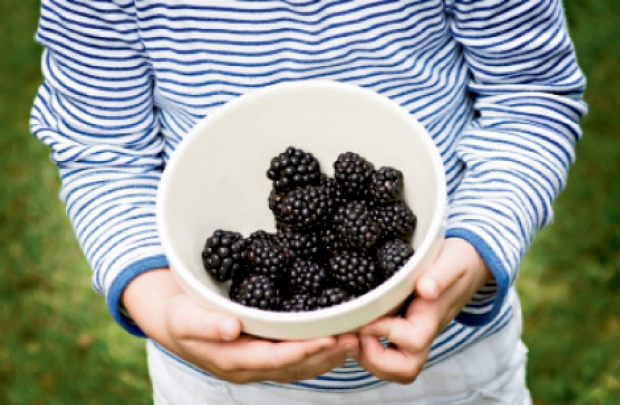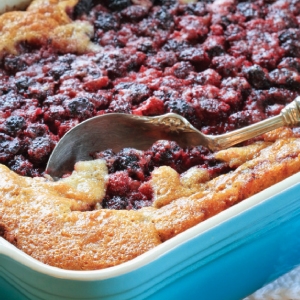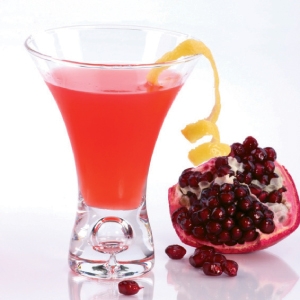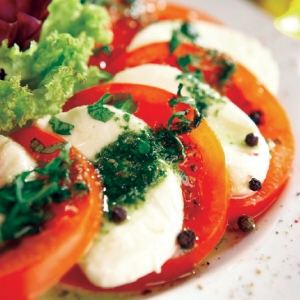Imagine plucking a pomegranate from your own backyard, or topping off your morning cereal with a handful of berries picked from a bush outside your back door.
Backyards aren’t just for barbecuing, basking in the sun or bird watching. There’s an opportunity to turn Grand Strand landscapes into bounties of edible delights thanks to a climate conducive to producing such wonderful fruits, vegetables and flowers. “With an ever-increasing trend toward sustainable landscapes and planting those plants that can provide both an aesthetic value as well as a culinary asset, many gardeners are opting to venture into the concept of planting an edible landscape,’’ said Gary Forrester, horticulturalist with Clemson University Cooperative Extension Service. “Many plants will provide edible fruit, flowers, roots and leaves.’’ Here are some easy-to-grow plants that not only provide sustenance but add an element of beauty in the backyard.
Figs Nutritious, decorative and easy to grow, this tree commands full sun and space to produce its delectable fruit If you have a wide open space and are looking for a picturesque tree specimen that also produces a delectable fruit, consider planting a fig tree. The fig with its muscular and twisting branches can grow as tall as 50 feet, but typically grows to a height of about 10 to 30 feet along the coast. Its summer foliage has a tropical feel and makes a bold statement in a backyard. Fig trees are relatively maintenance free if planted in the right location, which should allow for full sun in well-drained soil rich in organic matter. Because figs are susceptible to root knot nematodes, do a soil test prior to planting to determine if these pests are a problem. Although there are several types and varieties available in our area, the Celeste and Brown Turkey are two specimens that perform well.
Rosemary A member of the mint family, rosemary is favored for its fragrant foliage and pungy piney flavor Herbs, such as rosemary and chives, provide texture and aroma to an edible landscape. Rosemary is easy to grow and can be coaxed into a variety of shapes to add form to a garden. The perennial plant develops small flowers in late spring and requires very little care. It can be grown year round, but needs to be planted in soil with good drainage. Rosemary can be used as border plants or in mass plantings. This herb enhances lamb and chicken dishes. To harvest it, simply cut the stems with a sharp knife. Frequent snipping helps promote new growth.
Blackberries A great source of Vitamin A, potassium and calcium, blackberries provide heaps of nutrition Not only are berry shrubs ideal for creating a hedge, the fruit they bear is mouthwatering. The berries are a delight in pies, muffins, pancakes and as a topping on cereal. Blackberries are one such variety that trail, semi-trail or stand erect. Depending on the variety you choose, keep in mind they are quite drought-hardy, but do require considerable watering during the fruiting period. Trailing and semi-trailing varieties can be supported by a trellis or similar structure, which adds a vertical element to the landscape. Here’s a quick tip: the berries are ripe and at peak flavor when they begin to lose their glossy shine and turn slightly dull.
Pomegranates Its attractive foliage, blooms and fruit make the pomegranate plant a beautiful addition to any Grand Strand landscape It’s not unusual to find pomegranate trees tucked away on old estates and plantations, especially in the Midlands and Coastal Plain. But it is possible to grow them along the Grand Strand as well. These beauties are favored for their attractive foliage and blooms that vary in color from scarlet-red to orange, yellow, white or variegated, and bloom from late May into the fall. Plants may be single- or double-flowering with double flowers that resemble carnation blossoms. But it is their globe-shaped, juicy fruit–resembling Christmas ornaments–that makes this small tree a hit in the backyard. Plant them as a shrub border or create a backdrop for small shrubs and perennials. They work nicely in groups and make good screens. Plant two or more as cross-pollination increases fruit set.
Chives This hardy, fast-growing herb adds interest in the landscape with its long, slender leaves and lavender, edible flowers Chives are another wonderful herb that produces showy lavender flowers in the late summer and early fall that can be eaten or displayed in many dishes, such as salads and stir-fries. A member of the onion family, chives will grow to about 12 inches tall and require soil free from weeds as they do not compete well with other plants. Adding a bit of organic compost helps promote growth. Use scissors to cut chives for harvesting around 3 centimeters above the ground. After flowering, cut back the plant to encourage new growth. Chives are best grown in bunches, about five bulbs a bunch with the bunches spaced about 8 inches apart.








